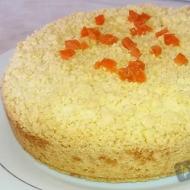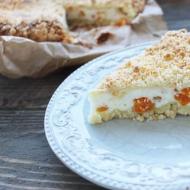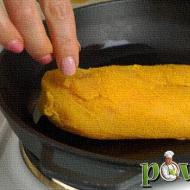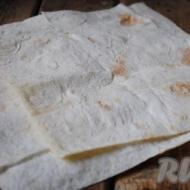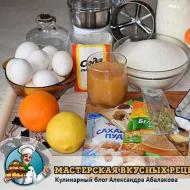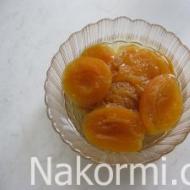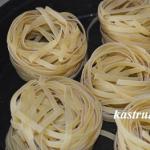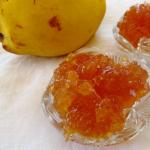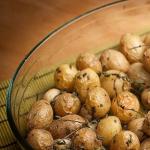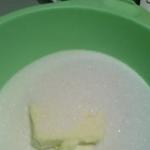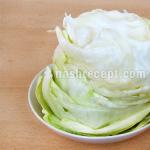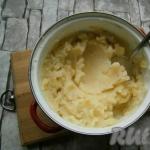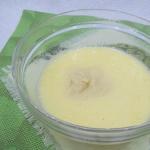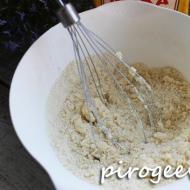
How to properly make mash from concentrated juice and distill it into moonshine. How to properly make mash from concentrated juice and distill it into moonshine. Recipe for Calvados from concentrated apple juice.
Mash made from concentrated juice is not only a flavorful drink, but also a suitable raw material for making stronger and purer alcohol. Wine or cider is often made from such mash, and moonshine can also be obtained.
Concentrated juice
Benefits of using concentrate
Home brew from concentrate has a number of advantages over other varieties and other types of raw materials:
- The drink is prepared from highly concentrated juice, which means that it is based on fruit. It is these raw materials that give the delicious aroma in the finished moonshine.
- There is no need to prepare and add fruit yourself. Since the concentrate does not have pulp, it means that furfural and a large amount of fusel oils with aldehydes will not form in the mash. There is also no need to filter the finished mash through cheesecloth to get rid of the pulp, and nothing will burn in the cube of the device.
- The concentrate already has ready-made indicators of sugar content and the content of various substances in the composition. You don’t have to determine the sugar content by eye, but calmly calculate the required amount of sugar and yeast. You can also calculate the yield of pure alcohol in advance.
Juice concentrate is a relief for the distiller's work. Since he does not need to deal with fruits, crush and filter the juice from them, pasteurize it. If we talk about proportions, then apple concentrates are diluted 1 to 6. If there are 5 liters of the substance, then it is diluted with water in the amount of 30 liters and a juice is obtained, which is sold in stores.
After such dilution, you can save on raw materials for mash and get more drink, and, accordingly, more moonshine. In this case, use recipes on how to make mash with fruit juice. But you don’t have to dilute the concentrate with water, but use it to prepare moonshine in its original form.
Technology for preparing mash
The concentrate cannot be used without additional sugar or a carbohydrate source. To do this, make invert sugar or purchase dextrose. You can also additionally purchase oak chips to infuse the moonshine with concentrate.
Based on the amount of ingredients, you can use the following proportions:
- 4 kilograms of dextrose or sugar syrup, that is, invert sugar.
- 5 liters of concentrate (apple or grape).
- 20 liters of water. The requirements for water are the same as in other recipes.
All components are mixed together; the temperature of the contents in the fermentation container should not exceed 20-25 degrees. With these indicators, the density of the wort is measured, and the information is also checked against the instructions for the yeast. It is worth using alcoholic or wine yeast, they give more yield from the mash. The concentrate will require about 100 grams of alcoholic yeast, or the amount is calculated using a special table in accordance with the density and sugar content of the mixture.
Pre-dried alcoholic yeast can be activated. To do this, the culture is poured into a container with water and mixed for three minutes. There should be no more than half a liter of water to activate the yeast. After stirring, foam will appear on the surface of the water, which will mean the yeast is ready for further work.
Braga is placed for 5-7 days. But you need to monitor the fermentation process daily. Alcoholic yeast can behave unpredictably. The acidity of the concentrate can also affect the rate of fermentation and lead to rapid souring of the product. If the mash is sour, then only additional addition of dextrose or sugar can save it. To prevent this from happening, a water seal is placed on the mash and foam formation is controlled.
Since the fermentation time is reduced with the help of yeast, and there is no pulp in the drink, the process proceeds quickly and without much foam formation - you do not need to use defoamers. But for everything to go smoothly, you need to monitor the temperature in the room where the fermentation container is located; the indicator should be between 20 and 30 degrees. Also, the container should not be exposed to sunlight.
The tendency for mash to sour is not the only disadvantage of using concentrate. This substance not only reacts unpredictably, but also costs more than juice or other types of raw materials. The concentrate can be found on the Internet or ordered from a juice factory. The main thing is that there are no chemical impurities in the concentrate, otherwise the mash will turn out tasteless. It is also important that all the characteristics of the concentrate, such as acidity, are indicated on the label.
At the end of the fermentation process, the drink is removed from the sediment. The taste and smell of this mash differ from traditional types of alcohol. Braga resembles hard cider when made from apple concentrate. The approximate strength of the drink, provided that alcohol yeast is working, is 18-20%. The mash is removed from the sediment before distillation, but is not clarified, as this will eliminate the pleasant aroma.
The distillation can take place at maximum speed. Selection of fractions is mandatory, but filtration before the second distillation can spoil the taste. Chemicals must not be used for mash and fruit-based drinks. The distillation itself is carried out according to the standard scheme. During the first distillation, the “heads”, or pervak, are selected - this part is used as industrial alcohol or poured out.
Before the second distillation, the drink should be diluted to a strength of 20%, and then the moonshine is distilled and do not forget about selection. The first 8-12% of the drink are “heads”, and after the strength drops in the stream to 40% there are “tails”. The result is clear moonshine from concentrated juice, which can be infused in an oak barrel or on oak chips to produce Calvados.
Making moonshine from concentrate is not too difficult a task for the distiller. The main thing is to correctly calculate the proportions of ingredients, focusing on your own concentrate. And the taste of the drink is practically no different from moonshine made with fruit mash.
Cider is a low-alcohol drink that is produced by fermenting the juice of apples, pears and various berries such as raspberries, currants and cherries. This is a tasty, highly refreshing aperitif that is equally enjoyable chilled in summer or warmed up with spices in winter. But the time when lovers of homemade drinks can take up winemaking is very limited. Apples and pears can only be processed into cider from September to December. The berries are available to the winemaker even less. In the West, concentrated juices have long come into use; you can prepare delicious fermented drinks from them all year round, without going through the painful stage. In Russia, few people still know about the existence of such concentrates, but today you can make cider and fruit brandy based on it at any time, regardless of the season. We'll tell you how to do it!
Cider recipe from concentrated juice
Ingredients (for approximately 25 liters of finished cider):
- 5 kg concentrated juice
- 20-25 liters of clean water
- 1 packet of yeast
Optional:
- (for carbonation)
- (according to instructions)
- (for wort sterilization)
- malic acid (to lower pH)
Equipment:
- (Brix 0-25%)
- equipment for bottling and capping beer or...
Notes on ingredients
Concentrated juices
 Concentrated juice is obtained by evaporating or freezing water from directly pressed natural juice. Due to the high sugar content (up to 70%) and short-term pasteurization, the concentrated juice can be stored in aseptic packaging for up to 24 months at room temperature. This product does not require additional sterilizing agents, which means it can be fermented with yeast without any problems. Our online store offers concentrated juices from apples (with acidity 1.5% and 2.5%), pears, raspberries and cherries. All of them are equally suitable for making high quality cider. To obtain reconstituted juice for further fermentation, the concentrate must be diluted with water in a ratio of 1 to 5 by weight. No other procedures are required.
Concentrated juice is obtained by evaporating or freezing water from directly pressed natural juice. Due to the high sugar content (up to 70%) and short-term pasteurization, the concentrated juice can be stored in aseptic packaging for up to 24 months at room temperature. This product does not require additional sterilizing agents, which means it can be fermented with yeast without any problems. Our online store offers concentrated juices from apples (with acidity 1.5% and 2.5%), pears, raspberries and cherries. All of them are equally suitable for making high quality cider. To obtain reconstituted juice for further fermentation, the concentrate must be diluted with water in a ratio of 1 to 5 by weight. No other procedures are required.
Cider made from pear juice is called perry. This drink is very popular in England, where it is made completely dry and often without carbonation. In France, fermented pear juice is called poiré - it is much sweeter than its English counterpart and is usually carbonated using champagne technology directly in the bottle.
Yeast for cider

To make cider, you can use different strains of pure yeast cultures (PYC). The best solution would be specially cultivated cider yeast, such as from the New Zealand company Mangrove Jack’s and from the French manufacturer Fermentis. These strains provide stable, clean fermentation under difficult conditions, have good flocculation (settle quickly to the bottom of the fermenter), and during fermentation promote the release of esters that unlock the full potential of fruit juices. Cider yeast can ferment at low temperatures (up to 12 o C), which is preferable for this type of raw material. Also, various strains of yeast for champagne, white wines and mead have worked well for fermenting cider. Interesting results are shown by various ale yeasts, which are best used to make semi-sweet cider without additional sweeteners. All CKD strains can be used without rehydration.
Instructions for making cider from concentrated juice
- Disinfect all equipment you plan to use with chlorine products (Star San, Sani Clean, Melkko, etc.).
- Pour the contents of the concentrated juice canister into the primary fermenter. You can rinse the canister with a small amount of warm water to wash away any remaining viscous juice.
- Add 2-3 liters of warm water to the fermenter and mix thoroughly. Bring the total volume of wort to 25-30 liters by adding clean, settled water. If you have a hydrometer, measure its gravity - for cider the specific gravity (SG) should be at least 1.045-1.050, which corresponds to 11.18-12.37% Brix (for a hydrometer). This density is sufficient to obtain a completely dry drink with a strength of 5.8-6.5%. To increase density, the required amount of dextrose can be dissolved in the reconstituted juice. You also need to measure the pH level of the wort, which after diluting the concentrate with water may be higher than the required level (3.9-4 pH or 0.6% acidity). To lower the pH, you can use malic acid or a special acidic mixture for winemaking. Sour wort ferments better and is less susceptible to bacterial contamination.
- Add 1 crushed Campden tablet to the fermenter (optional, can be replaced by maintaining complete sterility) for every 4-5 liters of wort, stir. Cover the fermenter with a lid and leave it alone for 24 hours.
- After 24 hours, add yeast to the wort, close the fermenter tightly and install a water seal. For a more stable and predictable fermentation, you can add a yeast nutrient to the wort before pitching the yeast. Move the fermenter to a dark place with an ambient temperature of 18-24 o C until the end of vigorous fermentation. Active vigorous fermentation will last 6-9 days, depending on the density of the wort, ambient temperature and other factors. When fermenting fruit and berry juices, in world practice it is often customary to maintain a lower temperature (12-15 o C) - this increases the fermentation time, but has a positive effect on the taste and aromatic qualities of the drink.
- An indicator of the end of fermentation will be the absence of carbon dioxide bubbles in the water seal, and the specific gravity of the wort will decrease to approximately 1.005 SG (1.5-2% by hydrometer). At the end of rapid fermentation, drain the young cider using a siphon into a secondary fermenter (preferably made of glass), install a water seal and place it for secondary fermentation in a dark place with a temperature of 12-15 o C.
- Secondary fermentation should last at least 30 days, even if there are no signs of it. But in order for the cider to achieve ideal transparency and harmonious taste, the time period should be increased to 2-3 months, and once a month the cider should be drained from the resulting sediment.
- Once secondary fermentation is complete (specific gravity drops to 1.000-0.995 SG or 0% hydrometer), the cider, which tastes like a young, dry, weak wine, can be bottled. At this stage it can be sweetened to taste and also carbonated.
Carbonation of homemade cider
Dextrose is most often used to naturally carbonate cider:
- Before bottling cider clarified after secondary fermentation, add ½ tsp to each 0.5-0.7 liter bottle. dextrose for moderate carbonation and 1 tsp. dextrose - for strong.
- Seal the bottles tightly and leave for 3-4 days at room temperature. During this time, the yeast, having received a new portion of food, is activated and will begin to process dextrose to produce carbon dioxide.
- After this, bottles of already carbonated cider need to be moved to the refrigerator for 10 days, where re-fermentation will be stopped. Sparkling cider is ready!

You can also use a “primer” for carbonation: save 1-2 liters of reconstituted juice in the freezer, and then add it, after defrosting, to the secondary fermenter immediately before bottling the finished cider. But the dextrose method is more reliable and predictable. It is recommended to keep bottled cider in a dark, cool place for another 2-3 weeks before tasting. Before serving, it is recommended to cool the drink to 12-14 o C.
Distillation of cider into Calvados and other brandies
In world history, fruit brandies have always occupied an important place in the culture of different countries. Surely many people know Normandy only for the landing of allied troops on its shores during World War II and the local cider brandy, Calvados. Calvados is made from apple cider, sometimes with pear juice added to the must. Some producers use only pear cider to produce Calvados. Another famous distillate of France is the fruit brandy framboise (“Eau-de-vie de framboises”), it is made from fermented raspberry juice. From the concentrated juices in our range you can also prepare kirschwasser - German cherry brandy. Using the technology described below, having previously prepared cider according to the instructions from the first part of this material, you can get high-quality fruit brandy from any fruit juice!
Due to the higher price of raspberry and cherry juice concentrates, to increase the distillate yield, you can add a little dextrose to the wort at the fermentation stage (after about 5-7 days, when vigorous fermentation subsides), no more than 1-2 kg per 10 liters. We strongly do not recommend regular sugar - the organoleptic properties are greatly deteriorated. For apple and pear cider, it is better not to do this.
Important points when processing cider into distillate:
- To obtain the most aromatic distillate, it is recommended to ferment cider at the minimum permissible temperature for as long as possible. Special cider yeast, which works without problems in such conditions, is the best choice here. In the homeland of Calvados, in Normandy, cider is usually fermented for 6 months to produce it.
- Any sulfur compounds present in your cider will become concentrated during distillation and impart unpleasant aromas to the drink, bordering on the smell of rotten eggs. Therefore, potassium metabisulfite and other forms of sulfur, which are used to sterilize wort, will have to be abandoned. Better to focus on sanitation. The small amount of sulfur compounds that are part of the by-products of fermentation can be easily removed by the copper components of your moonshine still.
- It is recommended to distill cider in devices where alcohol vapor will come into contact with copper. Firstly, copper “binds” sulfur compounds, leaving them on its surface in the form of dark oxides. Secondly, studies by domestic and foreign scientists have shown that during the first distillation of fruit mash, copper helps to obtain more enanth esters and other compounds that have a positive effect on the organoleptic properties of distillates.
- Distillation of cider can be carried out using any type of moonshine still, but it is important to understand that our goal is to obtain a flavorful drink. That is why you should abandon modules that are involved in the strengthening of alcohol (reflux condensers, drawers with on-load tap-changers, etc.). You should also avoid the steamer. Traditionally, Calvados and many other fruit distillates are distilled in copper alambics.
- During aging of fruit distillates in a barrel (including due to the membrane properties of the barrel - oak stave allows a small amount of oxygen to pass through, but retains liquids), complex biochemical processes occur, as a result of which many components of the head and tail fractions are transformed into complex aromatic esters. Therefore, for drinks that you plan to age in a barrel, it makes sense to cut off the “heads” and “tails” in a more gentle manner during the second fractional distillation. To drink distillates in their pure form and age them on oak chips, the product must be crushed as completely as possible.

Distilling cider into fruit brandy
We definitely use double fractional distillation. The first distillation should be carried out as quickly as possible to 10% alcohol by volume in the stream (98-99 o C in the steam zone) - it makes no sense to drive further, since there is very little alcohol left in the stillage, and a lot of resources are spent on its extraction. During the first distillation, in order to reduce the amount of isoamyl alcohol in the distillate (it does not have the most pleasant odor and is very toxic), it is recommended to select a small amount of the head fractions, literally to the stage of a stable stream of distillate at the outlet. The resulting raw alcohol (CS) should ultimately have a strength of about 30%.
During the second distillation, the “heads” should first be selected: 5% of the absolute alcohol in the SS or 1-1.5% of the volume of the SS in the cube. Head fractions should be selected very carefully, as they make a significant contribution to the organoleptic properties of the drink (floral and other undertones). The drinking distillate should be selected to 55-60% alcohol in the stream (90-91 o C in the steam zone). The tails, sometimes called "second alcohol", should be taken up to 10% alcohol in the stream and added to the next second distillation. The remaining “tails” can be pressed to zero if desired and added to the next first distillation or ringed. The result of your labors will be a distillate with a strength of around 70% with a very expressive, pleasant aroma of the raw materials. It can be diluted to drinking strength, kept for a couple of weeks and started tasting. But it’s better to refine it with oak.
Refining cider distillate with oak chips
Traditionally, Calvados and many other fruit brandies are aged for a minimum of 2-3 years in oak barrels. Kirschwasser and framboise are not recommended to be kept in a barrel or on oak chips, as they have a rather delicate taste and aroma. If you are the proud owner of oak cooperage products, the resulting distillate should be poured into a barrel without dilution - a strength of 65-70% is optimal. For faster and more convenient upgrading of the drink to the level of VS and VSOP apple brandy, we recommend using a medium or strong roast. For 1 liter of the resulting distillate, which should be pre-diluted to 45-55%, it is enough to add 4 g of wood chips in any form and keep the drink on it for at least 2 weeks. You can learn more about the principles of refining drinks with oak chips in this material.
Calvados prepared from apples at home, taking into account all the necessary requirements, will compete with purchased elite alcohol and will surprise you with decent taste and quality indicators. The technology is time-consuming and troublesome, but the result fully pays for all the time and labor costs.
How to make Calvados from apples?
As a rule, Calvados is prepared from apples of several varieties, selecting an assortment of sweet and sour, sweet and rich in aroma specimens.
- Apple raw materials are crushed in a blender or passed through a juicer.
- The apple base is used in its natural form or sweetened with invert sugar.
- Yeast in the mash is added exclusively to wine yeast, of proven quality, or ideally, wild yeast cultures contained on the surface of unwashed apples are used.
- The container with the mash is placed under a water seal for fermentation.
- The resulting alcohol base is distilled twice in a still.
- The preparation of Calvados from apples is completed by aging the alcohol in an oak barrel or infusing it with oak chips for at least three months.
Apple mash for Calvados

The correct recipe for apple mash for Calvados is the necessary basis for obtaining high-quality homemade gourmet alcohol. It is important to use only ripe apples without damage, dents, dark spots or spoiled areas, so as not to spoil the final result with unwanted flavor notes.
Ingredients:
- apples of different varieties - 3 buckets;
- white wine yeast – 10 g;
- sugar – 3 kg;
- water – 12 l.
Preparation
- The apples are chopped.
- Add water and invert sugar.
- The yeast is soaked in warm water for 15 minutes and mixed into the apple base.
- Pour the mash into a fermentation container and leave it under a water seal until fermentation is complete.
- Apple Calvados is obtained at home by double distillation of mash.
Homemade Calvados from apple moonshine

The recipe for Calvados, obtained from apple mash, is simple and can be made using several methods. The alcohol base with a strength of 70-80 degrees is diluted to 40-45 degrees and infused in a hermetically sealed natural oak barrel or simply in a jar, adding oak chips.
Ingredients:
- apple moonshine – 1 l;
- oak chips – 50 g.
Preparation
- Oak chips are poured with boiling water for 15 minutes, washed, dried and dried in the oven.
- Dry pegs are placed in a jar and filled with apple moonshine.
- Leave the container in a dark place for at least 3 months.
- Prepared Calvados from apples at home is filtered and bottled for storage.
Homemade Calvados from apple juice

The ideal option for preparing exquisite alcohol is Calvados, made from your own pressing of fresh apples of different varieties. It is convenient to use a modern juicer to obtain fresh juice, but a press is also suitable, through which apples crushed into puree and placed in a fabric bag are pressed, obtaining an equally natural drink.
Ingredients:
- fresh apple juice – 25 l and 1 glass;
- wine yeast – 10 g.
Preparation
- The required amount of juice is squeezed out of fresh sweet apples.
- Mix a glass of juice and water, dissolve yeast in the mixture, and leave for 30 minutes.
- Mix the yeast mixture into the juice, pour it into a fermentation container, and leave it under a water seal for a month.
- Apple cider is distilled twice.
- The distillate is diluted to the desired strength and infused on oak chips or in an oak barrel.
- When ready, Calvados from apples is filtered at home and bottled.
Apple pulp calvados

Calvados from apples, made at home from the pulp remaining after obtaining the juice, is somewhat inferior to the original classic apple alcohol, but has very decent properties. At the same time, it is important not to use substandard fruits or specimens with dents and damage for fresh juice.
Ingredients:
- apple pulp – 10 kg;
- water – 22 l;
- sugar – 2 kg;
- wine yeast – 15 g;
- oak chips.
Preparation
- The yeast is soaked in a portion of warm water for 20 minutes.
- Combine the cake, yeast and warm remaining water.
- Stir in invert sugar.
- Leave the mash under a water seal until fermentation is complete.
- The apple base is distilled and the distillate is infused with oak chips.
- When ready, Calvados is diluted from apple pulp to the desired strength and bottled for aging and storage.
Calvados from apple juice concentrate

Calvados is simply prepared from apple concentrate. This option for producing alcohol is feasible at any time of the year when it is not possible to use fresh fruits as raw materials. The yeast must be white wine or fruit yeast, which is pre-dissolved in diluted juice concentrate.
Ingredients:
- concentrated juice – 4 kg;
- water – 20 l;
- fruit yeast – 15 g;
- oak chips.
Preparation
- The juice is diluted with warm water.
- Yeast is poured into 130 ml of juice and left for 15 minutes.
- Mix the diluted juice and yeast and leave under a water seal until fermentation is complete.
- The mash is distilled twice.
- The distillate is diluted to 63 degrees, supplemented with wood chips, and left to infuse.
- Alcohol is diluted to the desired strength and bottled.
Calvados from store-bought apple juice

Calvados at home from apples is a recipe that can also be made from store-bought juice, if it is natural and of high quality. The final bouquet of the drink will be worthy when using wine yeast, the quality of which is beyond doubt. If there is an oak barrel, it is preferable to age the apple distillate in it.
Ingredients:
- apple juice – 20 l;
- wine yeast – 10 g.
Preparation
- Mix the yeast with a glass of juice and let it sit in a warm place for 30 minutes.
- Pour the yeast starter into juice heated to 30 degrees and leave it in the fermentation container under a water seal until fermentation is complete.
- The distillate is poured into an oak barrel for at least six months, after which it is diluted to the desired strength, bottled and sent to a cool place for aging and storage.
Applesauce Calvados

Apples, which are predominantly fleshy, loose with sandy pulp, are made from puree. It is difficult to obtain pure juice from such fruits, so pureeing the fruits is the optimal solution. To do this, it is convenient to use a blender or other convenient device: food processor, meat grinder, crusher.
Ingredients:
- applesauce – 20 kg;
- water – 10 l;
- invert sugar – 1 kg;
- wine yeast – 15 g.
Preparation
- The puree is mixed with warm water, sugar and yeast diluted in a portion of liquid.
- Pour the mixture into a fermentation container and install a water seal.
- Leave the vessel with the contents until the end of fermentation.
- Distill the mash through the cube twice.
- The resulting apple distillate is placed in an oak container or in a jar with oak chips for 3-6 months.
- Prepared Calvados from apple puree is bottled at home.
Calvados made from alcohol and apple juice

Apple Calvados, for lazy winemakers and those who don’t want to bother with apple mash, can be made from fruit juice with pure alcohol. The final strength of the drink can be 40-50 degrees. The proportions presented in this section are designed for a minimum strength of 40 degrees.
Ingredients:
- apple juice – 150 ml;
- water – 150 ml;
- alcohol – 210 ml;
- oak chips – 2-3 pcs.
Preparation
- Apple juice is diluted with water and mixed with alcohol.
- Add oak chips to the alcohol base and leave for 3-6 months.
- Strain the drink, filter, bottle it and store it in a cool place.
Apple jam calvados

It is quite possible to make a recipe for apple Calvados from jam that was not eaten on time and requires disposal in another way. Depending on the sweetness of the product, you may additionally need to sweeten the mash until you get a sweet, but not cloying taste with regular or inverted sugar.
We are 10 years old!
About Samodel
For ten years we have been the largest chain of stores in Saratov, selling equipment for brewing, distilling and winemaking.
Saratov Samodel means guaranteed quality of goods, a wide range and professional consultants. You can be sure that you will receive the best product and quality equipment when purchasing from our network. Moonshine stills, home breweries, cheese factories, meat processing, grills and barbecues, as well as a wide selection of ingredients and accessories for the home hobby. Now you can order the necessary goods anywhere in Russia.
Where to buy a moonshine still (distiller)?
Every year in Russia the popularity of making strong alcoholic drinks at home is growing, and the moonshine still has taken pride of place in the kitchen of Russian homes and apartments. By purchasing a moonshine still, you open the door to the fascinating world of distillation; almost all the world's drinks from classic (cognac, whiskey, chacha, vodka, moonshine, tinctures and liqueurs) to exotic liqueurs will become available to you. This is a great opportunity to treat your friends to quality drinks and save big. You no longer need to be afraid of fakes and counterfeit products. You know exactly how and what your product is made of. Our consultants will help you choose the best option from a wide range.
Home brewing
Home brewing is an exciting hobby that will allow you to plunge into the world of delicious and varied beer. By purchasing a mini-brewery, you can prepare 23 liters of live, unfiltered beer from more than seventy varieties. By experimenting with malt, hops and yeast, you can create unique beer varieties and styles. We offer a large selection of brewing equipment for home brewing, as well as ingredients and literature.
Cooking sausages and cheese making
Prepare sausages, canned food and cheeses at home using only natural and necessary raw materials. Our store sells sausage casings, household sausage equipment, autoclaves for preservation, as well as equipment and starters for home cheese making.
Calvados is valued primarily for its soft apple aroma and taste: it is pleasant to drink in its pure form, even despite its high strength.
It is quite possible to prepare such a wonderful drink at home. Of course, it will not 100% replicate the taste of the original from the shores of France, but it will be as close as possible to it.
Below we attach 2 recipes for making apple Calvados at home.
A simple recipe for Calvados at home
"Lazy" recipe. The drink prepared using this technology does not require much time or labor, but it also only vaguely resembles Calvados. It would be more correct to call it apple tincture.
So, we will need:
- Apples – 2 kg
- Vodka/Moonshine – 1 liter
- Sugar – 300 g
- Water – 500 ml
Preparation procedure:
- Select fresh and not rotten apples, wash them, cut out the cores, cut them into small pieces and put them in a jar. Pour in 40-degree moonshine or vodka.
- Close the jar with a tight lid and put it in a dark place for 10-14 days to infuse.
- Strain the tincture in any convenient way. We won't need the apples anymore; we can throw them away.
- Cook the sugar syrup: mix sugar and water, boil over heat for about 5 minutes. During cooking, foam accumulates on the surface, do not forget to remove it periodically. Cool the resulting syrup to 25-30°C, then pour it into the tincture.
- Pour the tincture into bottles and seal tightly. We recommend storing in a cool, dark place for 3 years.
We will get an apple liqueur with a strength of a little more than 30% with a sweetish aftertaste. It’s difficult to call it Calvados, although it imitates its taste and aroma quite well.

If you want to make truly authentic Calvados, we recommend using the recipe below.
Classic recipe for homemade apple Calvados
This recipe will require more time and effort from you, but the result is worth it. At the end, you will receive a drink that is in no way inferior in quality to the best samples from Normandy.

In this recipe, it is very important to choose the right apple varieties and their ratio. We will need:
- 4 parts sweet apples
- 4 parts bitter apples
- 2 parts sour apples
Above we have given the ideal ratio of apples. If you don’t have some varieties on hand, use those that are available. The most important thing is that the apples are fresh, ripe and free of rot.
1. Making apple cider
At the first stage, you do not need to rinse the fruits and squeeze the juice out of them. To do this, it is best to use a special press - it will effectively squeeze out all the liquid from the fruit and help separate the pulp.
Infuse the juice for 1 day in a dark place at room temperature in a tightly closed container. After a day, remove the foam formed on the surface of the liquid and pour it into a fermentation container. We close it with a water seal and leave it to ferment at a temperature of 18-30°C.
After fermentation is complete (the drink has clarified, the water seal does not allow bubbles), pour the drink into the distillation cube. It must first be filtered, otherwise the solid particles that get into the cube will burn during distillation and spoil the entire product.
2. Distillation
We distill the resulting cider using a moonshine still. To make the product purer and better quality, we do double distillation. We will not dwell in detail on all the intricacies of the process - we have already written in one of the previous articles about how to properly distill moonshine. Let's just say that distilling cider is no different from distilling sugar mash.
3. Ripening and aging
After double distillation, we should get a distillate with a strength of 70-80%. All we have to do is send it to age in an oak barrel.

But if you don’t have it, you can use a simpler option - infusion in a glass container on oak pegs.
The pegs must first be properly prepared. After all the aging and soaking procedures, we place the wood chips in a container and fill it with our distillate. The proportions for using wood chips are 10 g per 1 liter of drink.
Let it sit for 6-12 months in a tightly closed container.
At the last stage, we dilute the ready-made Calvados with water to a drinking strength of 40%, if required, and serve.
In custody
On the Internet you will find a dozen recipes for every taste using an apple-pear mixture. But if you want to get apple brandy as close as possible to the original, we recommend using apples.

